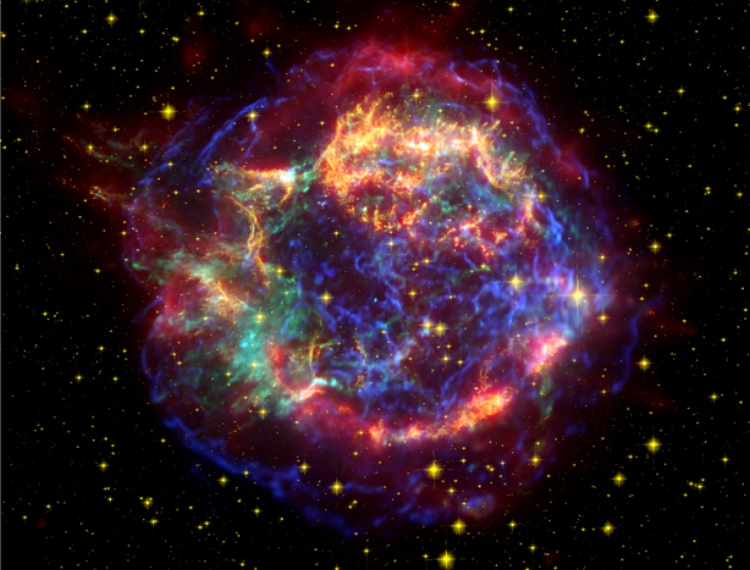
 Credit: X-ray: NASA/CXC/SAO; Optical: NASA/STScI; Infrared: NASA/JPL-Caltech
Credit: X-ray: NASA/CXC/SAO; Optical: NASA/STScI; Infrared: NASA/JPL-Caltech
Dust to Dust
A great observatory's power is greatly enhanced by in combination with others. This statement is exemplified by the above image of the Cas A supernova remnant. Cas A, as you'll remember, is the ejected nebula of a massive star that exploded in our Galaxy about 300 years ago. The beautiful image above is a composite obtained by NASA's three Great Observatories, the Chandra X-ray Observatory, the Hubble Space Telescope, and the Spitzer Space Telescope. The green-blue Chandra X-ray data emphasize the regions where hot gas has been created as the wreckage of the star plows into its surroundings. The optical data from Hubble (in yellow) reveals the regions where the nebular densities are the highest. And the Spitzer infrared data (in red) shows the presence of cold dust. Astronomers use these images to obtain a more complete understanding about how supernova feed galaxies; in particular these observations should enable astronomers to better understand how solid particles are produced by the expelled gases of a supernova. And these data reveal surprises as well - like evidence that the "dead" star emitted energy as recently as 50 years ago.
Last Week *
HEA Dictionary * Archive
* Search HEAPOW
* Education
Each week the HEASARC
brings you new, exciting and beautiful images from X-ray and Gamma ray
astronomy. Check back each week and be sure to check out the HEAPOW archive!
Page Author: Dr. Michael F. Corcoran
Last modified Monday, 26-Feb-2024 17:44:51 EST


